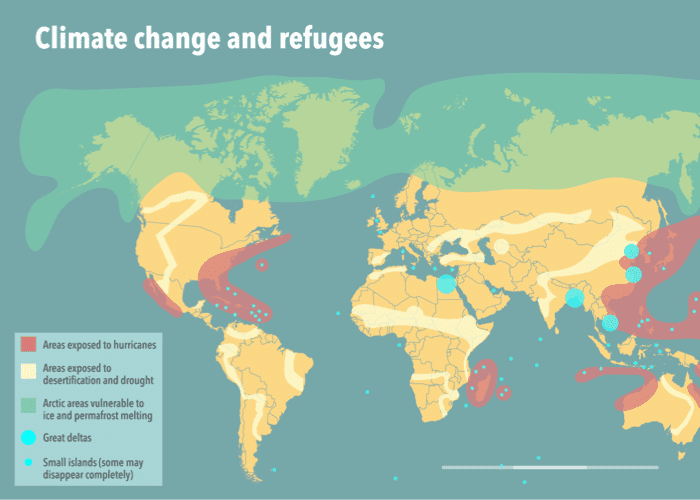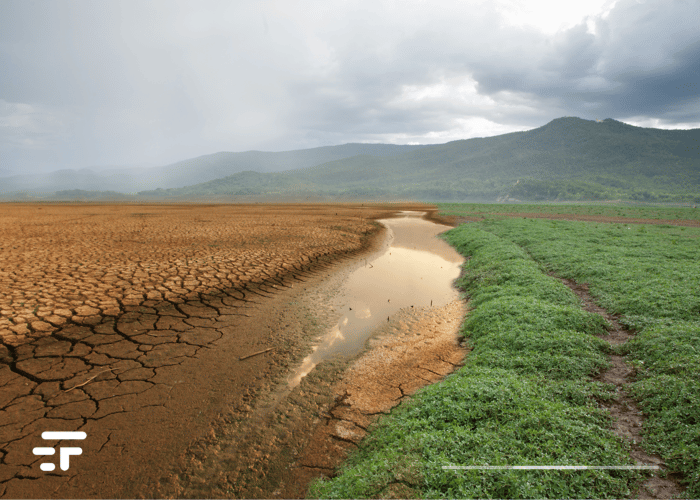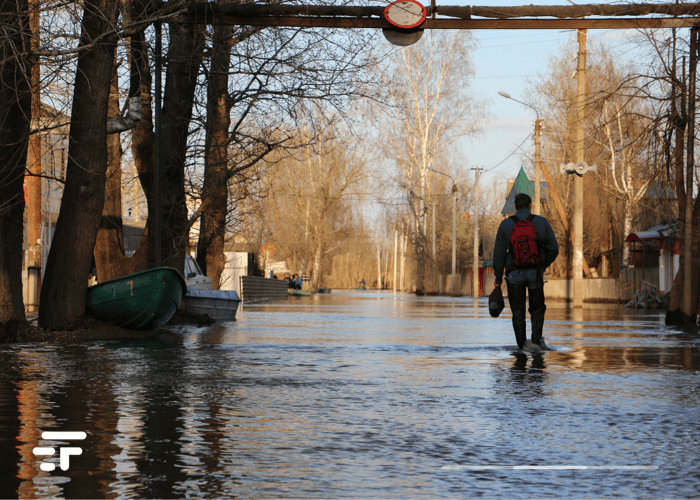Secondo the latest United Nations climate report, millions more people will be forced to relocate their homes, businesses and lives due to global warming. The experts who wrote the report suggested that viewing climate migration as a good thing rather than a catastrophe is key in our process of adapting to a warmer future.
The wealthiest nations look with terror at climate migration, make it a matter of national security. It is no coincidence that they militarized their borders (in one case even foreseeing robot dog patrols).
However, according to the report I linked to at the beginning of the post, climate migration can be a solution. A positive factor that would allow people to survive by moving away from risks, or families to maintain their standard of living by finding work elsewhere.
Is climate migration a positive factor?
A premise is necessary: this assessment would only hold if climate migration were well planned. “We can make climate change adaptation part of relocation if we provide and establish support systems for this,” he writes David Wrathall. Wrathall, a professor of natural hazards at Oregon State University and lead author of the report, sees no alternative. “Also because the cost of arriving unprepared is simply too high.”
He's right. To be clear, climate migration is already happening.
Movements towards the interior of the planet have been increasing since 2008. Since then, an average of 20 million people have been forced to flee every year. Floods, severe storms, droughts and forest fires are the main causes, which can force individuals to move or stop climate-dependent practices, such as agriculture. People often migrate from rural areas to adjacent urban centers.
What are the "hot spots" of climate migration?

According to the new report, they are present in sub-Saharan Africa, Asia and South America, but small island nations are disproportionately affected due to the consequences of rising sea levels. But climate migration is by no means limited to those parts of the world: in the US, for example, hurricanes, wildfires and droughts are already shaping people's decisions about where to live, voluntarily or otherwise.
“Climate migration is not inherently good or bad,” he says Robert McLeman, professor of environmental studies at Wilfrid Laurier University and another author of the report. “And it works well when it happens legally, respectfully and freely.”
McLeman said lowering legal barriers for climate migrants could make it easier for people to find safe housing or safe, legal work to send money home, an important way to build families' resilience. Trying to prevent climate migration, he said, is a lose-lose scenario that leads migrants to attempt clandestine border crossings: “It's not good for the migrants and it's certainly not good for the host community,” he said.
The rules will also need to be changed
To successfully manage climate migration, new paradigms will be needed. First of all, enhance the importance of mobility in people's lives. In a climate-disrupted world, more people will need to move. Not planning for this flexibility could lead to real tragedies and a frightening spread of poverty.
It will be necessary to invest in basic infrastructure and strengthen social systems such as schools, housing and health care, so as to be able to accommodate authentic traveling populations. If cities grow without planning, they will be full of slums.
Il Global Compact United Nations on Safe, Orderly and Regular Climate Migration sets the standards for preparation. And it makes us understand that there is still a lot of work to do.

We'll make it?
It is impossible to predict the future of climate migration, which depends on many factors such as population growth, governance and other adaptations that may or may not be implemented. By 2050, 140 million or more people in sub-Saharan Africa, South Asia and Latin America are projected to undergo climate change-induced internal migration.
And then?
The long-term outlook is more confusing, but experts know that more severe floods, storms and droughts are likely to become more frequent, forcing even more people to flee their homes, especially in vulnerable regions with limited adaptability.
Let's be clear: migration, although it can mitigate the damage of climate change, is not a good thing to wish for. It is always a long and painful experience, when possible: and there are many communities that simply will not have the strength to move.


